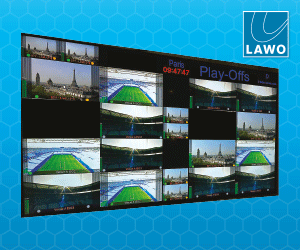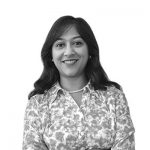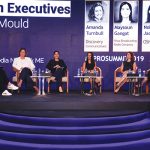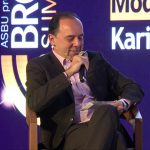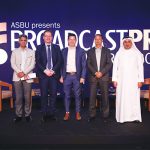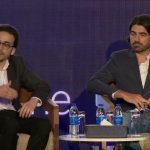Armed with a small camcorder, filmmaker and academician Tim Kennedy goes every week to Dubai Creek to capture the sights and sounds there. In an exclusive interview with BroadcastPro ME, Kennedy and fellow colleague Zlatan Filipovic discuss the making of The Floating Life of Dubai Creek and its sequel Tim Kennedy is Assistant Professor […]

Armed with a small camcorder, filmmaker and academician Tim Kennedy goes every week to Dubai Creek to capture the sights and sounds there. In an exclusive interview with BroadcastPro ME, Kennedy and fellow colleague Zlatan Filipovic discuss the making of The Floating Life of Dubai Creek and its sequel
Tim Kennedy is Assistant Professor at the College of Architecture, Art and Design, American University of Sharjah. He is also a part-time filmmaker and is presently working on a documentary aimed at capturing the stories of seafarers who travel the Gulf along with fellow academician Zlatan Filipovic.
The documentary is a sequel to Kennedys first feature The Floating Life of Dubai Creek, which was screened recently at Documentary Voices, a non-profit initiative aimed at encouraging the making of documentaries in the Arab world.
While the first documentary captures life around the creek, which was the centre from which all of Dubai gradually grew, the second film dwells on those whose livelihood depends on these waters and the trade that goes on there.
We are using a Nikon D800 with HDSLR set-up to shoot this film although we used a prosumer Sony AVCHD for our first film The Floating Life of Dubai Creek, explains Kennedys colleague Zlatan Filipovic, who is assisting with the post production for the film.
Its small size made it very inconspicuous during filming. For the sequel, along with the Nikon, we are using a Canon EOS 6D that serves as the secondary camera. Alongside this, we are using an H4N as the audio recorder. For post-production, we will use the Final Cut Pro X editing software, he explains.
Filipovic, who is Assistant Professor at the College of Architecture, Art and Design, American University of Sharjah, initially assisted Kennedy with the camera and the selection of other technical production equipment. Later, however, he became an integral part of the entire process, engaging in the entire workflow all the way from editing the footage to creating DVD and Blu-ray masters.
Selection of the gear and production strategy was crucial as it needed to be seamless and allow for quick hopping from boat to boat, explains Filipovic.
As with any documentary, this one also required the use of inconspicuous equipment so as to ensure that the subjects were candid on camera.
Of course, such requirements also brought their own challenges as the subjects had to be shot in small and at times not so easy-to-access places and often in low light conditions, which called for extra care at the editing table.
We initially worked on Apple Color and later, migrated to DaVinci Resolve, explains Filipovic.
The footage was transcoded in Apple Pro Res to allow for better grading control. Essentially, we shot in two formats for the first film. While our main footage was shot in AVCHD format @25Mbps, we had some DSLR footage that was shot on the Canon 5D MKII. We used Final Cut Pro 7 and Final Cut Studio 3 for post-production, he adds.
The Floating Life of Dubai Creek won Best Film award at the third Ares Film and Media Festival that was held in Siracusa, Italy, in November 2011. It was also screened at the New York City International Film Festival in July. The film duo was inspired to make the sequel when they saw the reception it received at international festivals.
The film captures an unglamorous life that is little known outside its immediate surroundings. There are no structured dialogues but a smattering of Arabic, Farsi, Hindi and even broken English. Kennedy believes the dialogues dont have to be subtitled to be understood as the story is clear from the images and the editing.
I may not have any commentary in the film, but I am making a comment by the selection of shots Ive chosen to show. A lot of documentaries put images together and the voice-over tells you how to understand it. Here, I am asking the viewers to make the connection themselves.
The language barrier, however, was evident at the time of shooting. Learning from experience, Kennedy engaged Saeid Khezri, a recent graduate of the College of Architecture, Art and Design, AUS, to serve as the Arabic and Farsi translator and interpreter for the sequel.
In this present shoot, my team is in the process of interviewing nakhodas (seafarers) who tell of their travels criss-crossing the Gulf, and how their work has changed over the years. We are focusing on the heritage of the seafarers, the history of their trade and the construction of their dhows, Kennedy explains.
When the filmmaker first came to Dubai in 2005, he did what most tourists did visit the malls, go for a Desert Safari, and see some of the emirates new landmarks. However, it was the Dubai creek that inspired him.
I was attracted to the old city that straddles the Dubai creek. I made photographic panoramas to capture the rich diversity of the community and to document the urban ecology. I felt an urgency to represent this authentic aspect of the citys heritage in the face of booming commercial development. The panoramas ultimately led to a familiarity with the urban fabric, and I moved into filmmaking, Kennedy elaborates.
The academicians love for filmmaking goes back to his student years. As an undergraduate student at Bard College in upstate New York, he was introduced to the work of independent filmmakers such as Stan Brakhage and Michael Snow.
They were developing their own one-man projects, and that was a revelation and an inspiration for me. I then moved to New York City to pursue filmmaking interests, and then to San Francisco where I earned a Master of Fine Arts degree in Film at the San Francisco Art Institute in 1981, explains Kennedy.
Although Kennedy teaches film at the University, he returns to the Creek to capture more footage.
I am interested in capturing this moment in time; the depth of the cultural layering that remains unobscured by western conventions for posterity. I had always heard of Gulf hospitality, but after experiencing it first hand, it amazed me. At first, I was a bit apprehensive to step off the regular touristy paths and approach the sailors in the boats. I was afraid that if I got on their boat theyd tell me to get lost. I am from New York, you see! But to my surprise, they welcomed me. We shared stories over cups of tea.
It has been a long steady journey of weekly visits to the labyrinthine paths of old Deira and Bur Dubai. For me, the dhows, the sailors and the traders are the unsung heroes of the Gulf waters. Its been a pleasure working with them.


